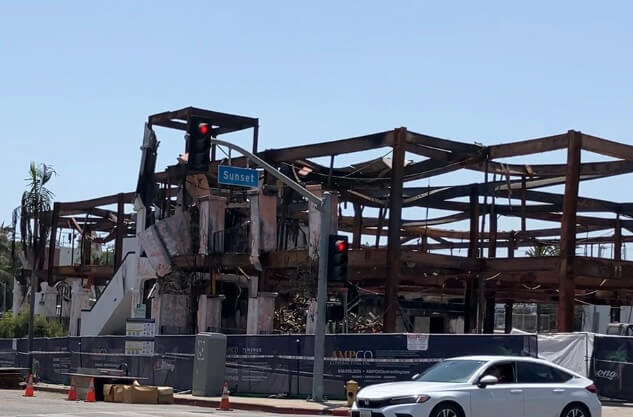Heat advisory also in effect
By Sam Catanzaro
With humidity in the single digits, gusts of winds reaching speeds upwards of 35 miles per hour and temperatures expected to surpass 90 degrees, public safety officials are warning that critical fire weather conditions will remain in the Los Angeles-area through Tuesday.
According to the National Oceanic and Atmospheric Administration (NOAA), a Red Flag Warning remains in effect through 7 p.m. Monday for much of Los Angeles and Ventura counties due to gusty Santa Ana winds and low humidities. NOAA says the Santa Ana winds will gradually diminish during the late afternoon hours, however, wind gusts of 30 to 40 mph will continue across the mountains and 25 to 35 mph across the valleys. Humidity values have lowered to between 5 and 15 percent this afternoon
There will be poor overnight recoveries tonight and Tuesday night in the mountains, foothills, and breezy areas. Meanwhile, even hotter temperatures are expected on Tuesday, with widespread temperatures into the 90s, including coastal areas, according to NOAA.
“The combination of hot and very dry conditions coupled with breezy conditions will bring widespread elevated to brief critical fire weather conditions across the entire region through Tuesday. The continuation of hot and dry conditions on Wednesday will lead to elevated fire weather conditions away from the coast,” NOAA said in a statement.
In addition, NOAA has implemented a heat advisory for Los Angeles County Coast including the cities of Los Angeles, Ventura, Oxnard, Camarillo, Malibu, Santa Monica, Beverly Hills, Hollywood and Long Beach. The advisory will be in effect from 11 a.m. to 7 p.m. Tuesday, with temperatures up to 94 degrees expected.
“Drink plenty of fluids, stay in an air-conditioned room, stay out of the sun, and check up on relatives and neighbors. Young children and pets should never be left unattended in vehicles under any circumstances. Take extra precautions if you work or spend time outside. When possible reschedule strenuous activities to early morning or evening. Know the signs and symptoms of heat exhaustion and heat stroke. Wear lightweight and loose fitting clothing when possible,” NOAA said.


























